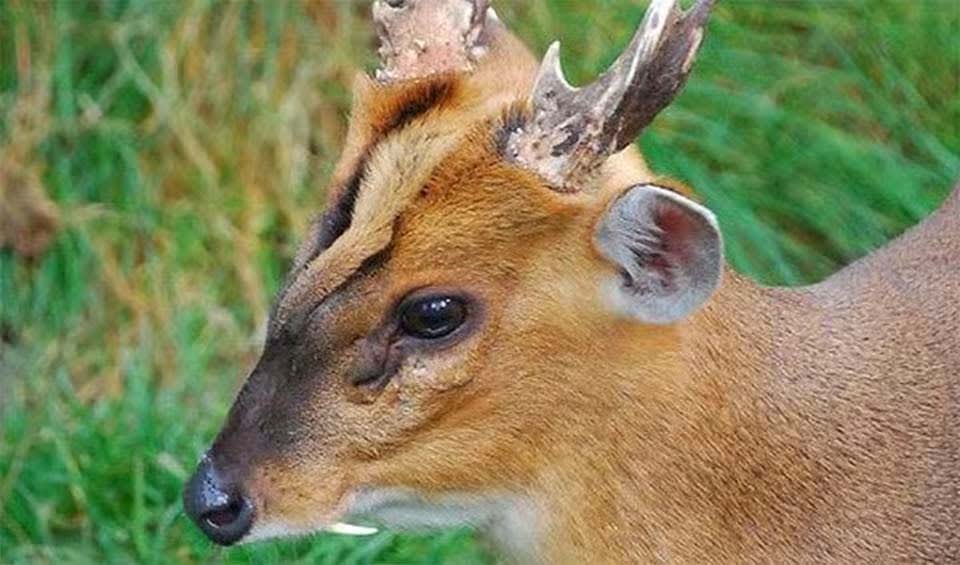Traguli’ – Chevrotains
The most ancient family of all ruminants and the tiniest (as light as 2kg/4.4 pounds)
Chevrotains represent one of the most ancient lineages of hoofed mammals, with a history tracing back approximately 50 million years. These small, elusive creatures, often called mouse deer, inhabit the dense tropical forests of Eastern Africa and Asia. Their name, “mouse deer,” aptly describes their appearance, with delicate, deer-like legs and small, mouse-like faces, a combination that gives them a distinctly unique look among ungulates.
Unlike their larger deer relatives, chevrotains do not possess antlers or horns. Instead, males are equipped with enlarged fang-like canines that protrude from their mouths, similar to musk deer. These tusks are used in territorial disputes and defense against rivals, showcasing a fascinating example of how different species evolve various means of combat and display despite their size limitations.
The diet of chevrotains reflects their adaptation to the nutrient-rich environment of tropical forests. They are selective feeders, primarily consuming a variety of fruits, seeds, and flowers found in their habitat. This diet is not only abundant but also easily digestible, providing them with the necessary energy with minimal effort. Their preference for such foods aligns with their small size, as processing fibrous plant material requires more complex digestive systems found in larger herbivores.
Despite their diminutive stature, chevrotains have developed remarkable strategies for survival. Their small size and cryptic coloring allow them to blend into their surroundings, helping them avoid detection by predators. When threatened, they rely on their agility and knowledge of the terrain to escape, darting into the dense underbrush or diving into rivers. Chevrotains are adept swimmers, a trait that not only aids in escaping predators but also in foraging for aquatic plants.
Genera in this family
Unlike most mammals, male water chevrotains are smaller than the female


